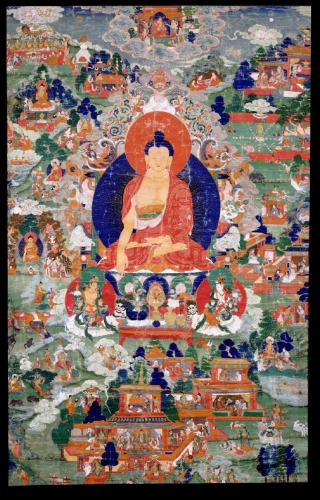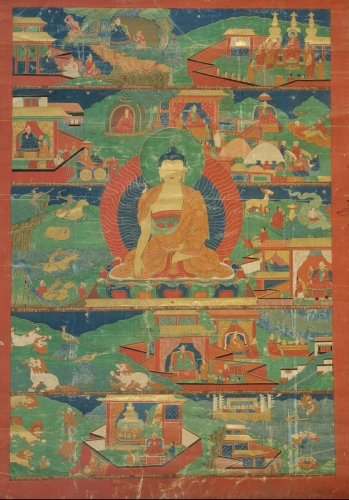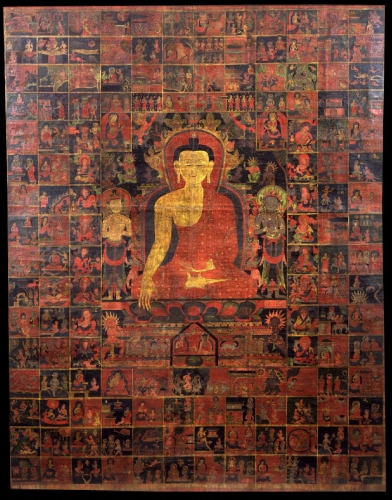Buddhist practice and Buddhist art have been inseparable in the Himalayas ever since Buddhism arrived to the region in the eighth century. But for the casual observer it can be difficult to make sense of the complex iconography. Not to worry—Himalayan art scholar Jeff Watt is here to help. In this “Himalayan Buddhist Art 101” series, Jeff is making sense of this rich artistic tradition by presenting weekly images from the Himalayan Art Resources archives and explaining their roles in the Buddhist tradition.
Himalayan Buddhist Art 101: Stories of the Buddha

Stories have always been a big part of the Buddhist teaching tradition. In Himalayan and Tibetan art there are three main topics or divisions of Buddhist stories that are commonly depicted in painting: the life story of the Buddha, the Jataka tales, and the Avadāna.
The first topic is the life story of the historical figure Shakyamuni Buddha. This type of painting can either contain the entire life story in a single composition or divide it among several paintings, typically between three or nine. Shown here is an example of the former, where the entire story is depicted beginning at the top center and moving around the central figure in the clockwise direction.

The second topic, the Jataka tales, relates 34 events from the previous births of Shakyamuni Buddha. In a number of the stories the Buddha is born as a lower creature such as a deer, rabbit, or bird. The 34 stories can be found depicted in a single composition where geometric registers are employed to divide and organize the stories. It is more common in later periods, however, to find the stories divided among several individual compositions—usually numbering three, five, or greater.
The third topic concerns the Avadāna stories, of which there are 100. The subjects of these stories relate both to the previous lives of the Buddha and to the previous lives of his most prominent disciples. Included in the Avadāna collection are even some stories from the biography of the historical Shakyamuni Buddha and the Jataka tales.

In early Avadāna paintings, all 100 stories can be found depicted in a single composition. In later centuries, it became much more common to divide the stories between a large number of compositions, comprising up to 33 individual compositions.
In painted depictions, these three topics or divisions of stories seem almost impossible to distinguish from one another. Next week we will look at key visual differences and clues that make a correct identification not only possible but easy.
Continue to Part 2: Life Story Quick Guide
View more paintings of Avadāna and Jataka tales, and learn about the Jatakamala (Garland of Stories) at Himalayan Art Resources.